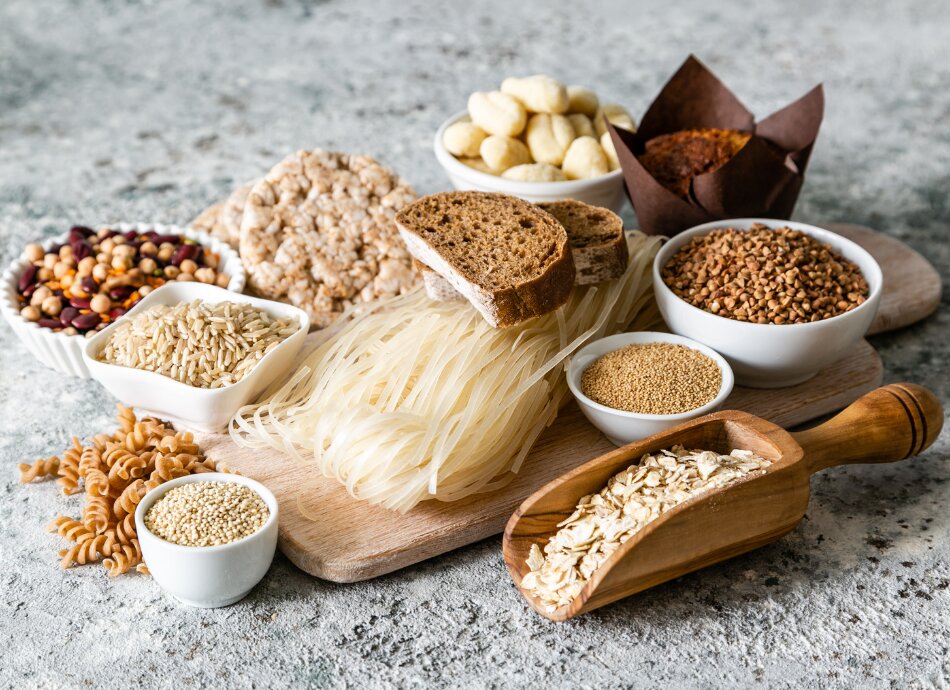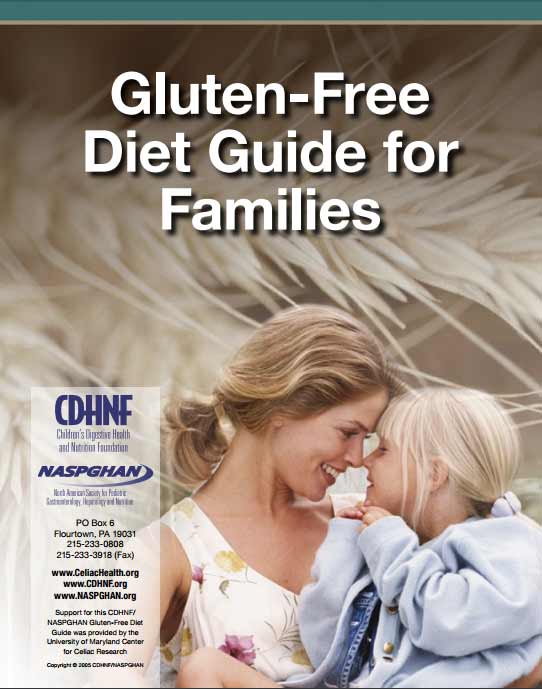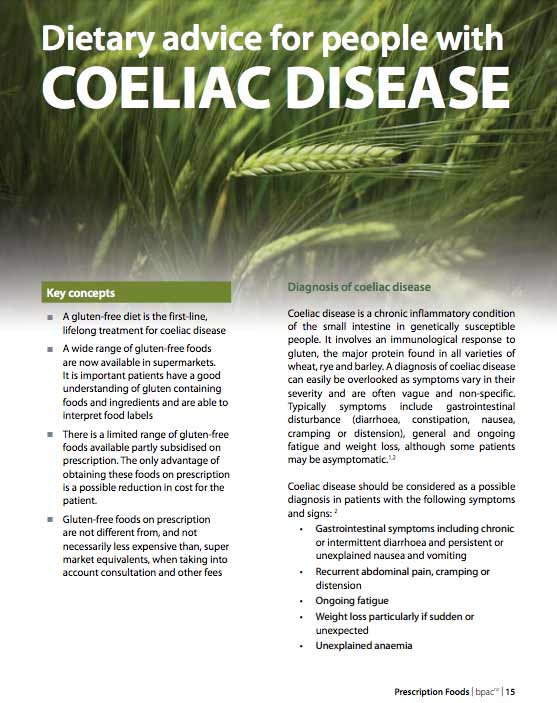If you are diagnosed with coeliac disease, the treatment is to avoid eating food that has gluten in it. This includes making sure to avoid hidden sources of gluten and foods that may have been cross-contaminated with gluten.
Your doctor may also advise you following a gluten-free diet if you have gluten intolerance or sensitivity. You may find that you can tolerate a small amount of gluten, so may not need to take so much care to avoid hidden sources of gluten or cross-contamination.
Removing gluten from your diet without medical advice puts you at risk of missing out on some nutrients, and this can lead to other health issues. Digestive symptoms can be caused by many things, so see your doctor before changing your diet. Getting the right diagnosis is your best chance of improving your symptoms and maintaining good health long term.
Low or no data? Visit zero.govt.nz, scroll down the page then click on our logo to return to our site and browse for free.
Gluten-free diet
Key points about gluten-free diet
- Gluten is a protein found in 4 grains (cereals): wheat, rye, barley and oats.
- Some people need to avoid gluten in their diet for health reasons.
- You may have coeliac disease, an autoimmune condition meaning that you react to the gluten protein and need to avoid it altogether.
- You may be intolerant to gluten meaning that eating it results in a range of gut symptoms that could be linked to gluten, eg, abdominal pain, bloating and diarrhoea.
- A gluten-free diet is a diet that contains no gluten. Gluten is identified on all food labels in New Zealand and Australia.

Coeliac disease is an autoimmune condition that means you react to a protein called gluten. Eating gluten causes damage in your gut (small intestine), often linked to not absorbing vitamins and minerals properly, including low blood iron levels (anaemia) and weak bones (osteoporosis). Taking the gluten out of your diet lets your gut recover.
If you are diagnosed with coeliac disease, the treatment is to follow a gluten-free diet, even if you don't have any symptoms. Unfortunately, coeliac disease can’t be cured and is a life-long condition. Ask your GP to refer you to a dietitian to help you change to a gluten-free diet.
If you keep eating gluten, damage to your gut will still be happening, even if your symptoms have gone away.
Gluten is a protein found in 4 grains (cereals): wheat, rye, barley and oats. Fermenting these grains (eg, sourdough) does not change the amount of gluten and so should be avoided.
If a product contains gluten or wheat it will be identified on the ingredient list or in the allergy alert panel. Wheat may also be called atta, bulghar, bran, couscous, dinkel, durum, emmer, farina, German wheat, graham flour, Kamat, Polish wheat, semolina, spelt, triticale, wheat bean and wheatgerm.
Watch out for hidden gluten
Some people with coeliac disease show no improvement on the gluten-free diet. The most common reason for this is because you are still eating small amounts of gluten.
Hidden sources of gluten include additives such as modified food starch, preservatives and stabilisers made with wheat.
Hidden sources of gluten may also come from cross-contamination from gluten-containing foods, eg, breadcrumbs in the toaster.
Don't eat the following products unless they state ‘gluten free’ on the packaging.*
|
Foods containing gluten |
May contain hidden sources of gluten |
|
Bagels Battered foods Beer Biscuits Bread Breadcrumbs Breakfast cereals that include oats Burger buns Cakes Crackers Croutons Donuts Dumplings Gravy Ice cream cones/wafers Lemon and barley cordials/drinks Liquorice Lollies Luncheon meat Muesli Noodles Pasta Pies Pizza Porridge Sausages Soy sauce Spaghetti Stock cubes/liquids Stuffing Wheaten cornflour Wraps |
Additive 1400 (dextrin-roasted starch) Baked beans Baking powder Cornflakes Dry roasted nuts Frozen chips Hot chips Ice cream/desserts Imitation seafoods, eg, surimi Lite sour cream Marinated meats Pickles, relishes, chutneys Rice bubbles Sauces Sausages Soups Yoghurt
|
* Note: These lists are not complete. For more information, speak to a registered dietitian or visit www.coeliac.org.nz(external link).
Gluten and wheat is identified on all food labels in New Zealand and Australia. Always check the label.
Thickeners to avoid
Thickeners (modified starches) made from wheat and raising agents made with wheat starch are not gluten free.
- Additive 1400 (dextrin-roasted starch) is made from wheat.
- Other thickeners (from 1401 to 1450) are made from maize, tapioca or potato starch and are gluten free.
Highly processed sweeteners are gluten free
Sweeteners such as caramel, dextrose, glucose, glucose syrup and maltodextrin are such highly processed and purified ingredients that the source of the starch doesn't matter. Even when made from wheat they are gluten free because they have been processed so much.
Naturally gluten-free foods
There are foods that are naturally gluten free, so you can eat them safely. They include:
- fresh fruit and vegetables, including potatoes and other starchy vegetables
- milk and cheese
- rice (including glutinous rice)
- unflavoured chickpeas, lentils and beans
- fresh, unprocessed, unflavoured meats, chicken, fish and seafood
- eggs
- butter and oils
- unprocessed nuts and seeds.
Cross-contamination occurs when gluten-free foods come into contact with foods that contain gluten.
Exposure to gluten, even in tiny amounts and with no symptoms, can cause damage to your gut surface and increase the risk of long-term complications. Therefore you need to know how to reduce the risk of cross-contamination in different situations.
Manufactured products
- Cross-contamination can happen during the manufacturing process, eg, if the same equipment is used to make a variety of products.
- Some food labels include a 'may contain' statement if cross-contamination is likely.
- However, this type of statement is voluntary and some products may be at risk without the manufacturer stating this.
- If you are unsure whether a food may be contaminated, don’t buy it. Check with the manufacturer first.
- If a food says it is 'gluten-free' it has been tested to be free from cross-contamination and safe to eat.
- If a food has the ‘crossed grain’ logo then it has been approved by Coeliac New Zealand to be gluten free.
Cafes and restaurants
Many cafes and restaurants offer gluten-free food, but not all of them know how to avoid cross-contamination.
- If you are unsure whether the food is safe, ask questions about how they avoid cross-contamination.
- If you are not satisfied with the answers, it's best not to eat the food.
- Some cafes and restaurants are registered with the Dining Out Programme(external link) sponsored by Coeliac NZ. Staff at these places have been trained in how to avoid cross-contamination.
Supermarkets and other food shops
- Be aware of the risk of cross-contamination in bulk food bins, due to people using the same scoops for food with and without gluten.
- Also watch out for cross-contamination with deli foods, eg, if staff use the same tongs for food with and without gluten.
At home
Cross-contamination can also occur at home. This can happen if foods are prepared on the same surfaces or boards as food with gluten in it, or with utensils that weren't thoroughly cleaned after being used to prepare gluten-containing foods. Using a common toaster for gluten-free bread and regular bread is also a major source of cross-contamination.
Reduce the risk of cross-contamination at home by:
- washing kitchen equipment, utensils and chopping boards after preparing foods containing gluten or use separate equipment for gluten-free food preparation
- wiping surfaces down well with hot, soapy water after preparing foods containing gluten
- keeping gluten-free food and food with gluten in separate areas in your kitchen – putting the gluten-free food higher in the cupboard makes it less likely to get crumbs/flour etc from gluten-containing foods spilled on it
- using a washable silicon mat on cooking surfaces that may be contaminated with gluten, eg, barbeques
- using toaster bags or a separate toaster for gluten-free bread
- having separate containers of butter/margarine, spreads and chutneys for those on a gluten-free diet.
Video: Setting up a gluten free pantry
This video may take a few moments to load. Playback on other websites has been disabled by the video owner. Watch on YouTube(external link). (Coeliac NZ, 2020)
Video: Easy gluten free product substitutions
This video may take a few moments to load. Playback on other websites has been disabled by the video owner. Watch on YouTube(external link). (Coeliac NZ, 2020)
Video: Cross contamination and how to control it
This video may take a few moments to load. Playback on other websites has been disabled by the video owner. Watch on YouTube(external link). (Coeliac NZ, 2020)
Video: Gluten Free Flour & Baking Tips
This video may take a few moments to load. Playback on other websites has been disabled by the video owner. Watch on YouTube(external link). (Coeliac NZ, 2020)
For more videos of the same webinar series, visit Coeliac NZ(external link) on YouTube (Coeliac NZ, 2020)
For more information, contact Coeliac NZ(external link).
- Membership benefits include a regular magazine, along with telephone support and assistance.
- New members are provided with a manual containing information on coeliac disease, the gluten-free diet, where to shop, recipes and helpful advice to make the change to a gluten-free diet as easy as possible.
How to eat gluten free(external link) Coeliac NZ
Gluten free recipes(external link) Coeliac NZ
Gluten(external link) NZ Nutrition Foundation
Resources
Gluten-free diet guide for families(external link) Children's Digestive Health & Nutrition Foundation, USA, 2006
Dietary advice for people with coeliac disease(external link) BPAC, NZ, 2011
Brochures

Children's Digestive Health & Nutrition Foundation, USA, 2006

BPAC, NZ, 2011
Credits: Healthify editorial team. Healthify is brought to you by Health Navigator Charitable Trust.
Reviewed by: Katrina Pace, MSc Human Nutrition
Last reviewed:
Page last updated:





